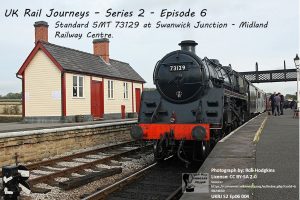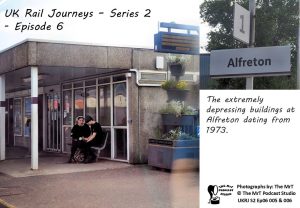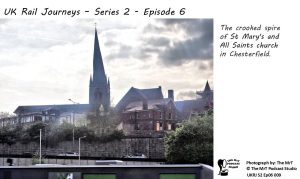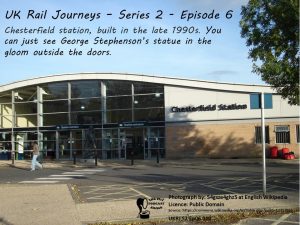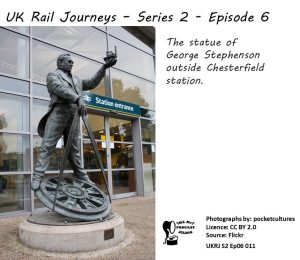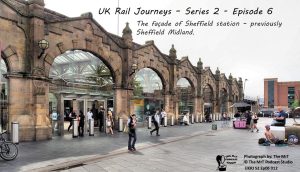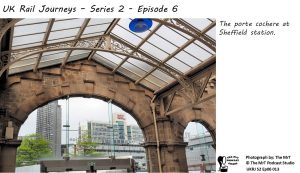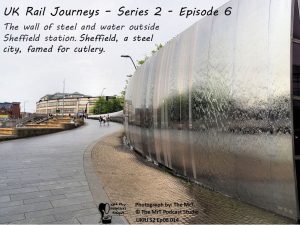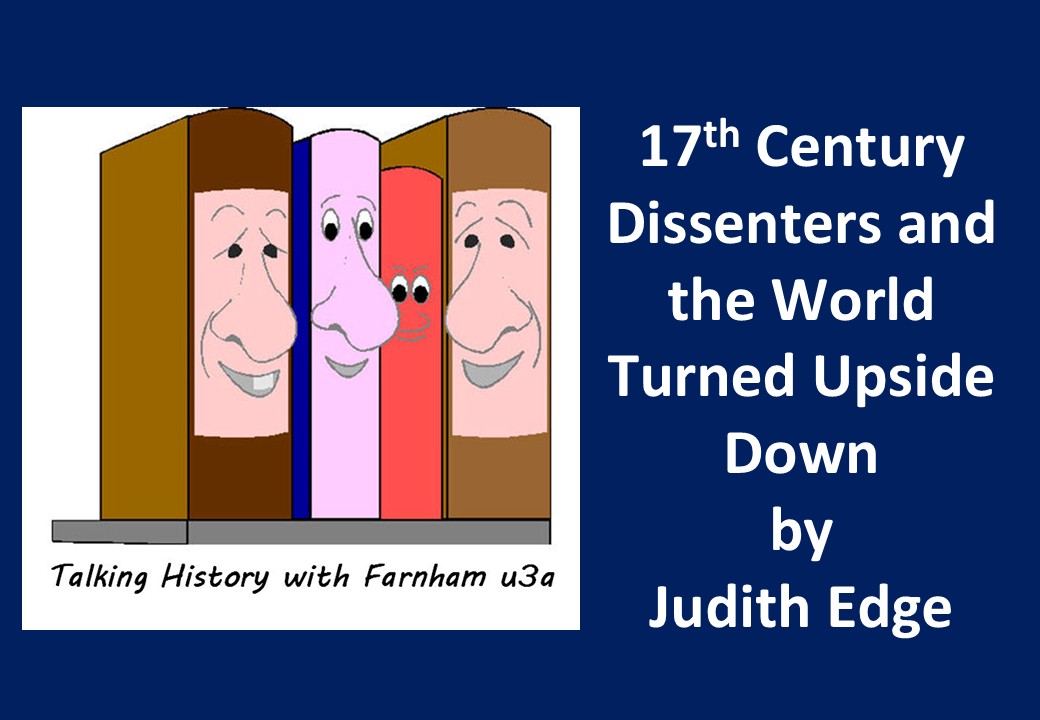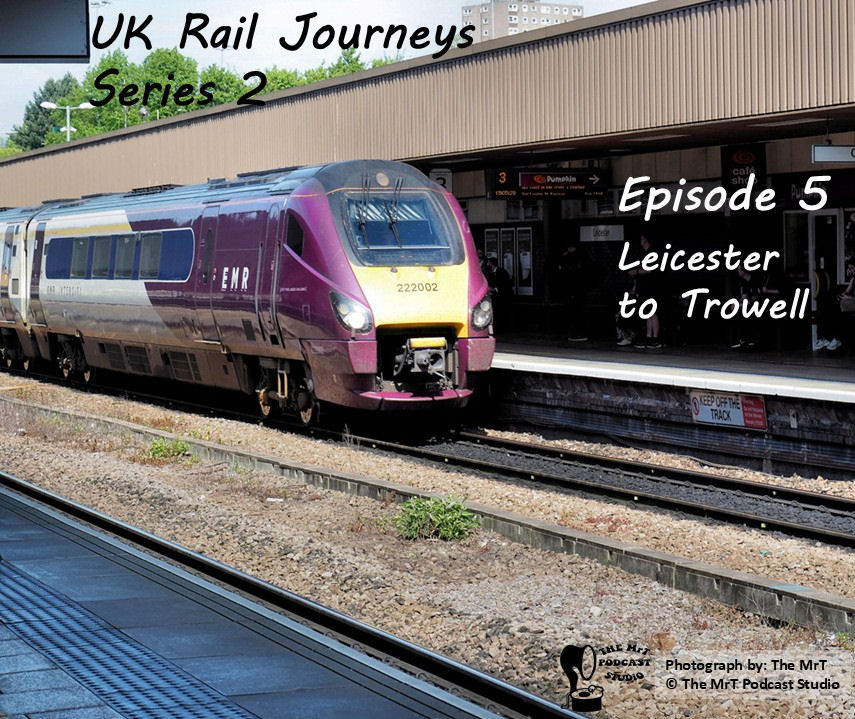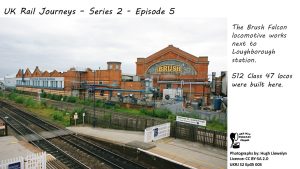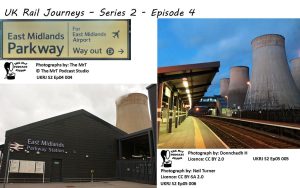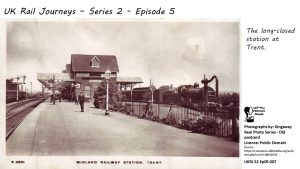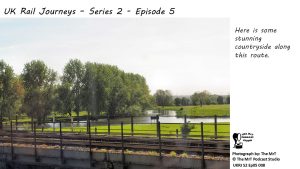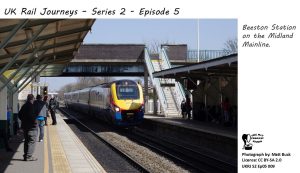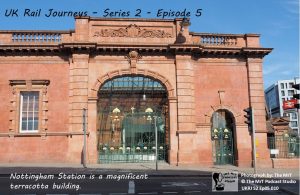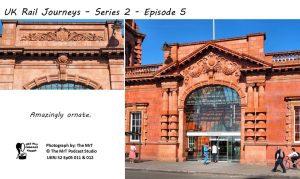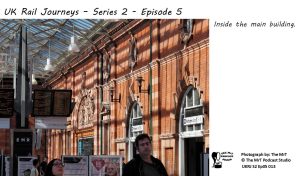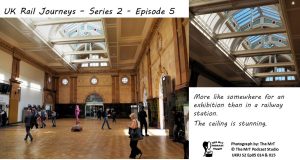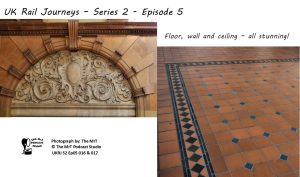Podcast: Play in new window | Download (Duration: 17:26 — 16.0MB)
On to Sheffield – UK Rail Journeys
Series 2 Episode 06
In ‘On to Sheffield’ my journey continues with the East Midlands Railway from Trowell to Sheffield along the original route of Thames Clyde Express.
Please click on a thumbnail to see the photographs that go with the podcast:
Ilkeston:
In 2013 Ilkeston was the largest town in Britain with an operational passenger railway line running through it, but no station. The government’s New Stations Fund, managed by Network Rail provides funds for such developments.
The building work is repeatedly delayed; there are a number of issues at the site. There is the potential for flooding, ground instability from historic mining activity, and its home to some endangered species.
Work finally commences in April 2016. It includes several bespoke designs for the site conditions and is completed in ten months. The new station opens in April 2017.
Bennerley Viaduct:
This is one of only two remaining wrought iron railway viaducts in the UK. This magnificent viaduct is the result of the rivalry between the railways in the nineteenth century.
At the time the Midland Railway has a great deal of control over the movement of coal by rail. Although the Midland is based in Derby, local businesses and city councillors feel that it’s monopoly is holding back the development of Derby.
They lobby Parliament to allow for another railway company and let the Great Northern Railway build a line through the heart of the city. To reach Derby the Great Northern builds a line from Nottingham to Derby and the on to Eggington Junction. They also build branch lines running into the Erewash Coalfield.
The biggest obstacle is crossing the Erewash Valley, an area honeycombed with mine workings. This leads to the design of the Bennerley Viaduct. It is built in 18 months during 1877 and 1878.
Onwards:
We pass through the depressing 1970s station in Alfreton and then on to Chesterfield.
There is a statue to George Stephenson outside Chesterfield station. He settles in this town with the famous crooked Church spire towards the end of his life. His grave is in the church, next to that of his wife.
Sheffield:
I leave the train in Sheffield where I am staying the night. Sheffield station used to be called Sheffield Midland, when there were multiple stations in the city, is the northernmost point of the Midland Mainline.
My train is going on to Manchester and then Liverpool Lime Street.
The stone built Sheffield station looks well restored. It receives 3 stars in the Simon Jenkins book Britain’s 100 Best Railway Stations.
I’m going to walk from the station to my hotel, the comfortable and friendly Premier Inn at St. Mary’s Gate, and then go and find something to eat, probably at El Paso which has a mix of Mexican and Italian food.
Listen to the podcast to hear about the journey from Trowell to Sheffield.
This podcast is also available through Amazon Music, Apple Podcasts, Castbox, Deezer, Podchaser, Spotify, You Tube and others.
![]()
Music:
AKM Music licenses Steam Railway and Forward for use in this podcast.




